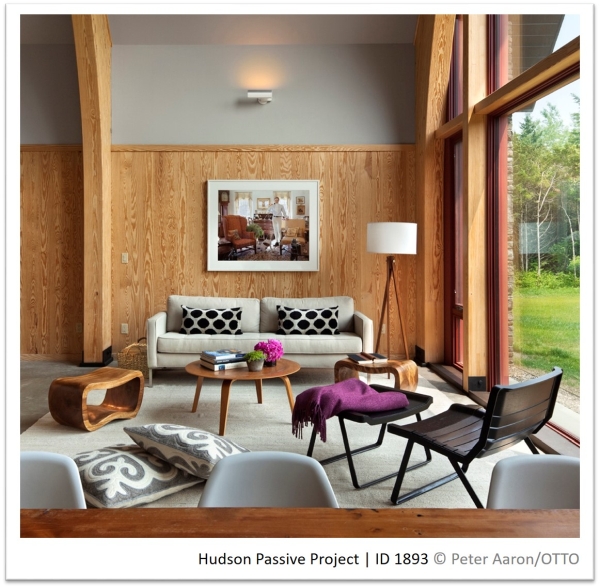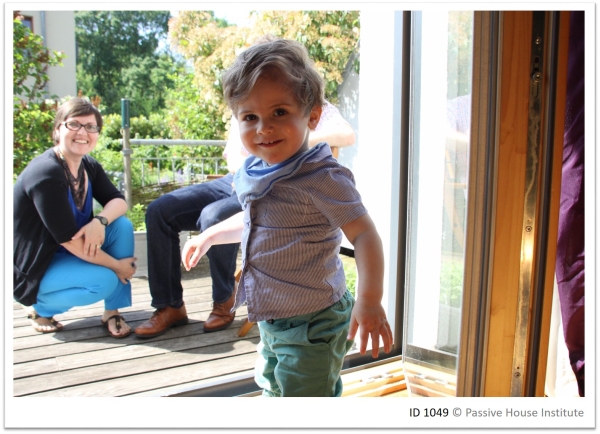2. Energy efficient & so much more!
| Site: | Passive House Online Training | Passive House Institute |
| Course: | Passive House for Decision makers |
| Book: | 2. Energy efficient & so much more! |
| Printed by: | Guest user |
| Date: | Tuesday, 21 October 2025, 4:03 AM |
1 - Video presentation
TRANSCRIPT
So you want to fight climate change, but still enjoy a comfortable life?
Then try out a Passive House building! Experience great indoor comfort whether you are living in a hot and humid climate or in a dry and cold region - you will enjoy nice temperatures and humidity levels all year round! All this without radiators below your windows!
Passive House buildings also provide a healthier living environment. Are you concerned about air pollution? But unsure how to escape it? Well, just find your nearest Passive House! Thanks to its airtight layer and ventilation filters, pollutants and allergens will remain outside. Meanwhile, indoor air pollutants and unwanted odours will be continuously removed by the controlled ventilation. What‘s more, sleep tight at night: Thanks to a high quality envelop, mould growth and condensation is not a problem in Passive Houses, not even behind furniture!
Now what about costs? Are you tired of throwing your money away? Then invest it in a top quality building envelope and efficient building services. It is especially worth it in times of high price inflation and low interest rates! No matter the investment costs, Passive Houses are cost-optimal over their long life cycle. Their operation costs are very low, so once the loan is fully repaid, you will save money compared to a conventional building!
In addition to that, Passive House buildings are sustainable. They usually require some insulation, but the energy saved over their life cycle will always be much higher than the embodied energy of insulation, no matter the material. What is more a lower energy demand means lower CO2 emissions. It also makes a 100% renewable supply possible, be it with wind, solar or hydroelectricity. But couldn’t we just balance a higher energy demand with more renewable energy? Not really, because energy isn‘t always available when we need it the most. And what about space, especially in the cities? What about cost, storage capacity and aesthetical integration in the landscape?
Last but not least, Passive House buildings fulfill their promises over time! Over the past two decades, the first Passive House built in Germany has been consuming on average, 7 times less than a conventional low energy building. After 25 years of operation the ventilation ducts still look new thanks to the ventilation filters. The building envelope is also intact. Only some window seals needed replacement, which is normal and easily done. In the end, it is all about the experience. So come and have a look at some Passive House buildings during the Passive House Open days to fully appreciate their benefits!
TO REMEMBER
- Advantages of Passive House buildings
- Comfortable
- Excellent air quality
- Cost-optimal over life cycle
- Sustainable
- Long-lasting - International Passive House Days
2 - Further material
Feel comfortable!
Enter a Passive House building during the International Passive House Open Days to enjoy consistent temperatures on all interior surfaces! Indoor climates remain constant without temperature swings or draughts - during cold winter months as well as hot summer periods.
By the way, did you know that most people worldwide feel comfortable when temperatures are between 20 and 25°C? This was the finding of the Danish scientist P.O. Fanger, whose comfort equation is documented in the norm ISO 7730. It is derived from the concept that for optimal thermal comfort the heat loss of the human body is in an equilibrium with its heat production. This forms a relationship between the activity and clothes as well as the properties of the thermal environment. Now the great news is that by achieving the Passive House standard requirements Fanger’s comfort criteria are automatically optimally fulfilled - substantially improving the thermal insulation simultaneously improves thermal comfort.
Financial study of Passive House buildings
Investment costs are usually higher for energy-efficient buildings, but some bigger projects were already built without any additional investment costs. Some were even cheaper than the usual construction costs, like this Passive House student accommodation in Vienna, Austria. Investment costs depend on each project, its size and design. They also depend on the location, mainly due to product and knowledge availability. It is also much easier to reach the standard in warm climates.
To accurately compare the energy demand of a Passive House with the one of a conventional building, it is important to enter both alternatives in the PHPP and select the same conditions. This means you need to base your simulations on the same reference surface, temperature and climate. You should take the additional and reduced investment costs into account, as well as the additional and reduced expenses over the years. And don’t forget the residual value of long-lasting components.
Passive House life quality
Life in a Passive House building feels completely normal - and is actually even simpler! Thanks to the high quality building envelope, you don’t need to continuously turn the thermostats up and down, nor reduce the temperature at night or while away. You also don’t need to worry about window ventilation anymore. In addition, the maintenance load is fairly reduced thanks to simplified technical services: You just need to exchange the ventilation filters once a year.
"Living here is much easier, the maintenance of the building is much simpler, you don't have to worry about boilers, fuel tanks, radiators, etc." Gabriel & Eva, residents of a PH in Spain
Check out our Tips and Tricks for Passive House residents and have a look at more user feedback about living in a Passive House on Passipedia.


